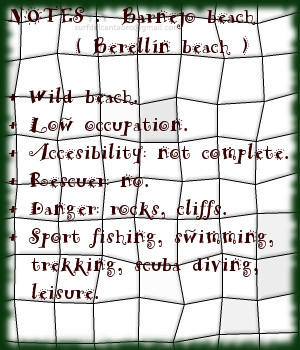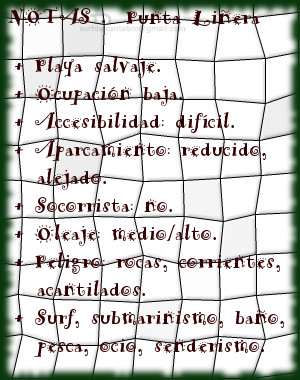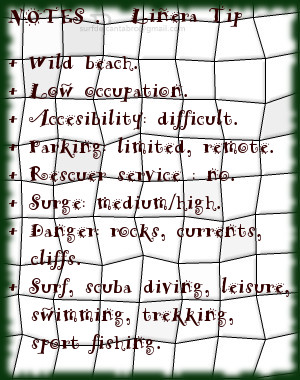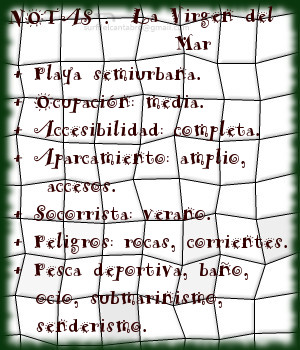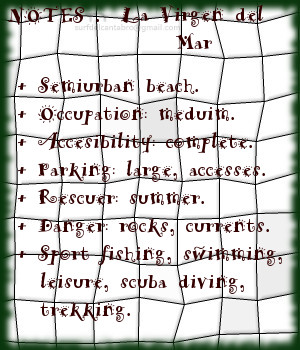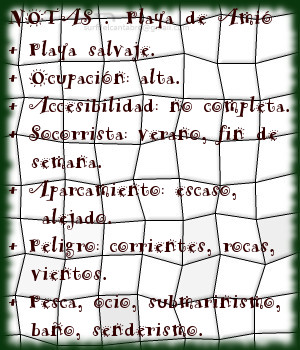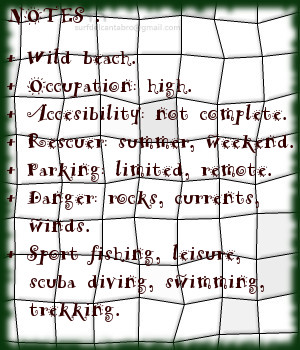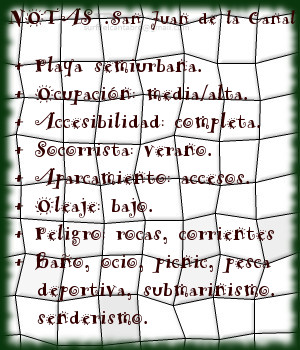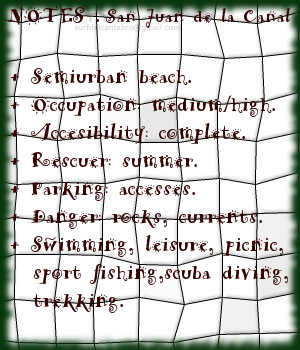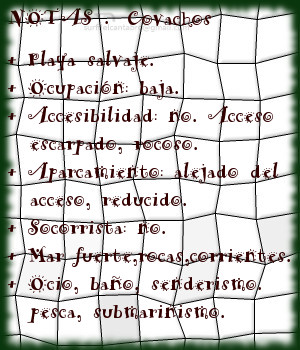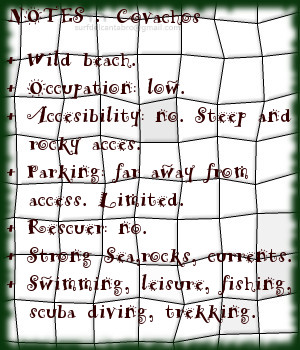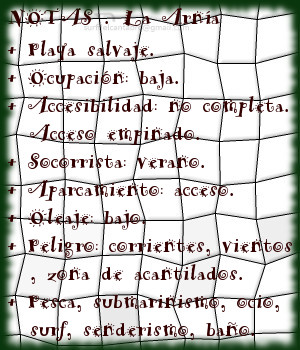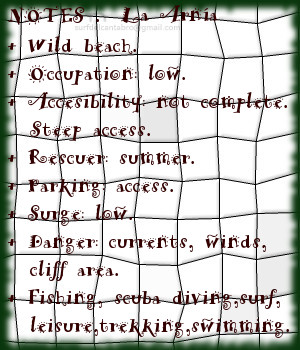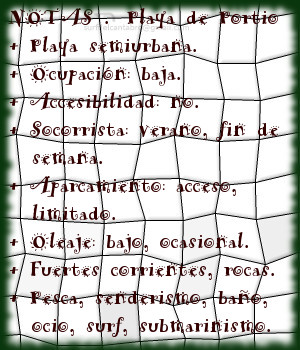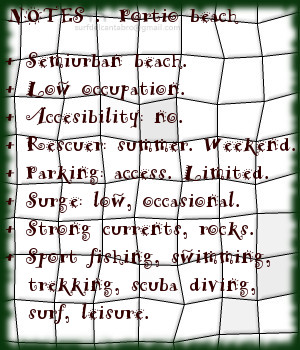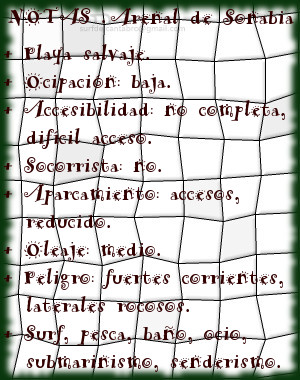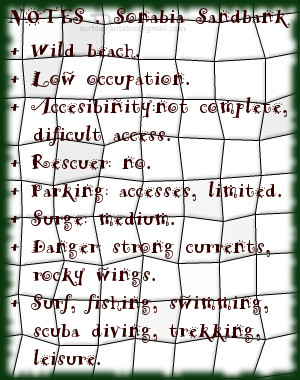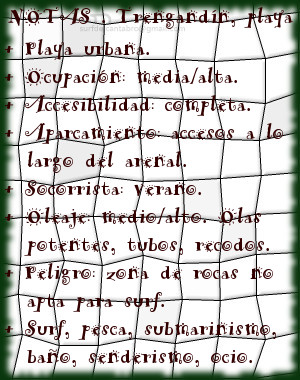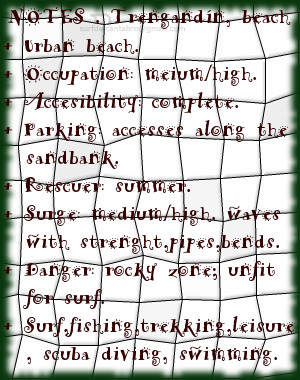Barnejo, playa
![]() La playa de Barnejo, también llamada playa de Berellín, se encuentra en la localidad de Prellezo, perteneciente al municipio de Val de San Vicente. Emplazada en la costa occidental de Cantabria, de reducidas dimensiones, descubre un área singular de especial belleza.
La playa de Barnejo, también llamada playa de Berellín, se encuentra en la localidad de Prellezo, perteneciente al municipio de Val de San Vicente. Emplazada en la costa occidental de Cantabria, de reducidas dimensiones, descubre un área singular de especial belleza.
La Punta del Morro de Berellín y la Punta de África, dos pequeños cabos que se ubican en la zona, delimitan la Ensenada de Berellín. La playa está contenida en la ensenada que compuesta por formaciones kársticas y un dibujo libre e irregular de la costa va abriendo la entrada al mar a través de sus acantilados. Apenas 100 metros en la parte más ancha, crean un canal que serpentea a lo largo de casi 800 metros de longitud.
El diferente y potente paisaje que rodea a la playa, estimula los sentidos que por los senderos van descubriendo la zona. Las aguas tranquilas y de color verdoso traslucen el fondo arenoso que invita a disfrutar de un relajado baño. El amanecer, su atardecer, el mediodía se convierten en diferentes y buenos perfiles de una misma postal.
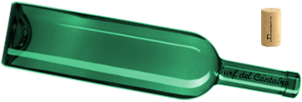
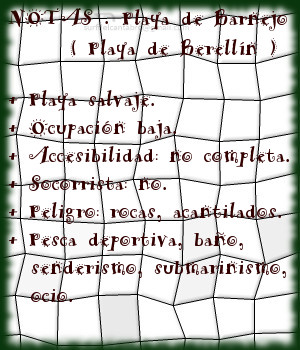
Barnejo, beach
![]() Barnejo beach, also called the beach of Berellín, is in the locality of Prellezo, belonging to the municipality of Val de San Vicente. Located on the western coast of Cantabria, with limited dimensions, it discovers a singular area of special beauty.
Barnejo beach, also called the beach of Berellín, is in the locality of Prellezo, belonging to the municipality of Val de San Vicente. Located on the western coast of Cantabria, with limited dimensions, it discovers a singular area of special beauty.
The Tip of El Morro de Berellín and the Tip of Africa, two small capes that are located in the zone, delimit Berellín’s Inlet. The beach is contained in the inlet that composed by karst formations and with a free and irregular drawing of the coast, opens the entry to the sea across its cliffs. Hardly with 100 meters in the broadest part, believe a channel that winds along almost 800 meters of length.
The different and powerful landscape that is around the beach, stimulates the senses that through the paths are discovering the zone. The calm waters and of greenish color reveal the sandy bottom that invites to enjoy a relaxed bathe. The dawn,the sunset afternoon, the midday turn into different and good profiles of the same postcard.

